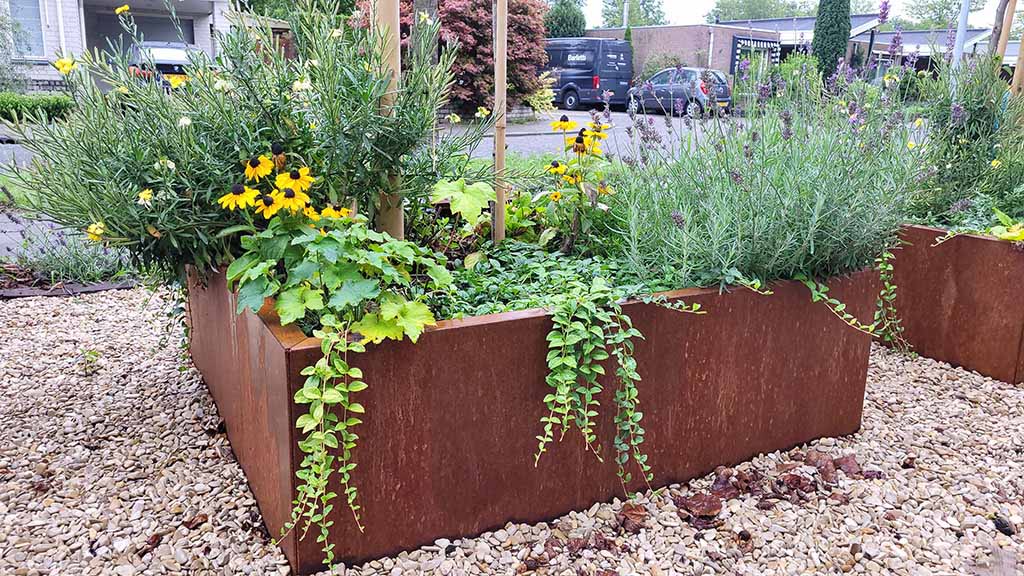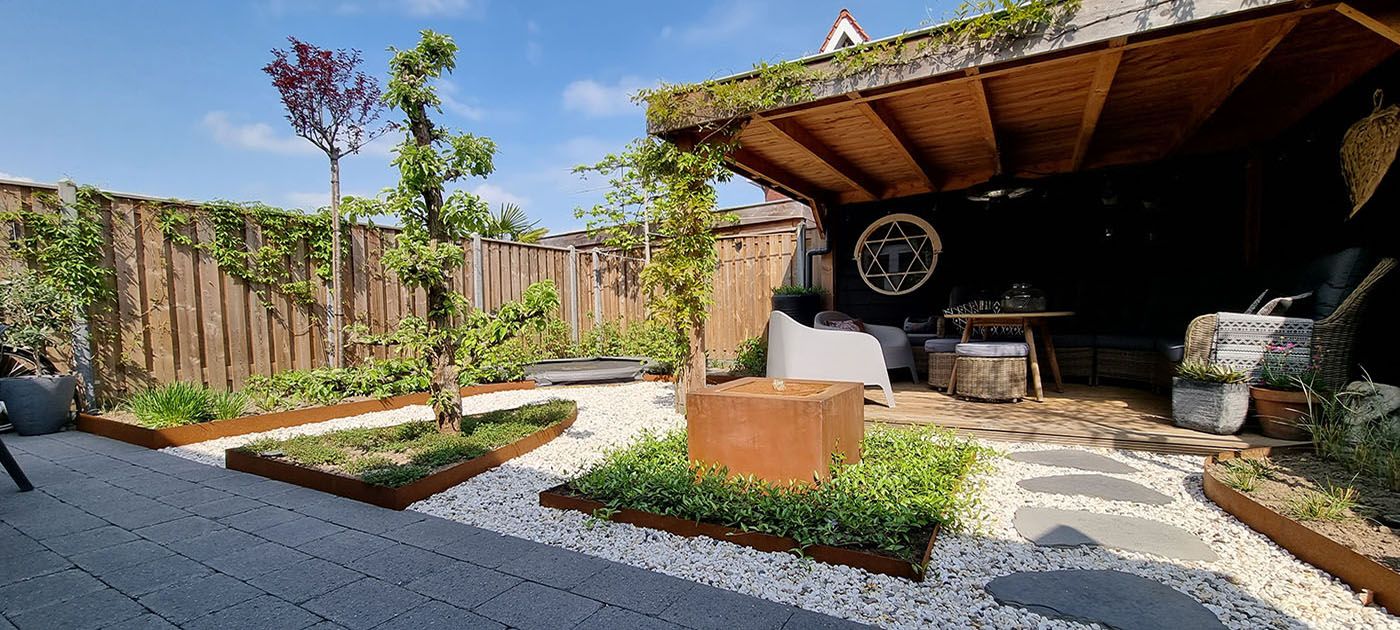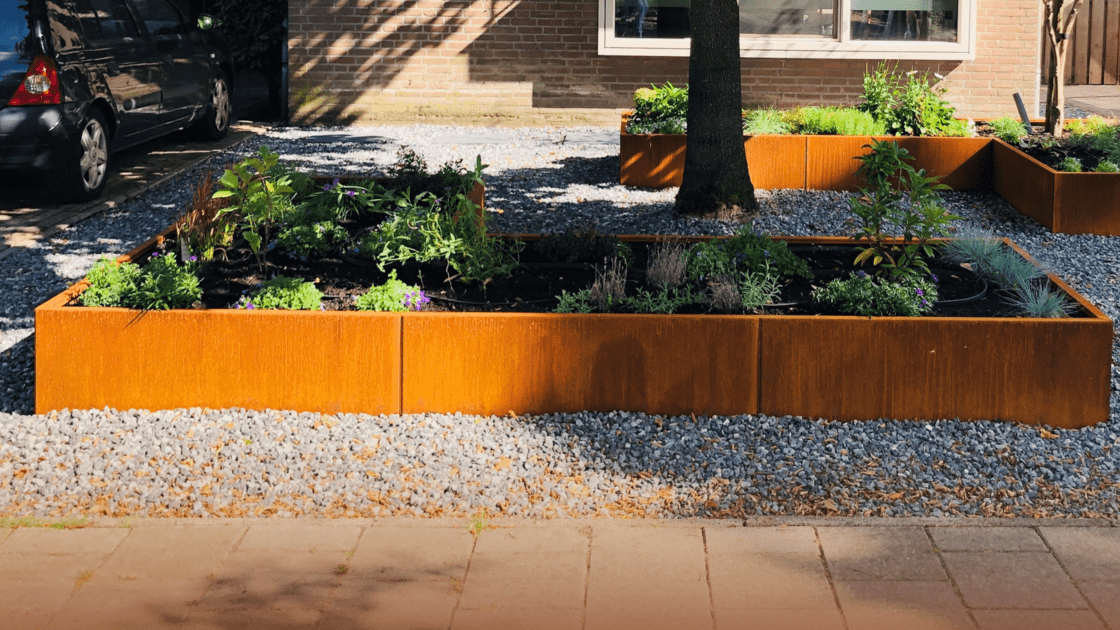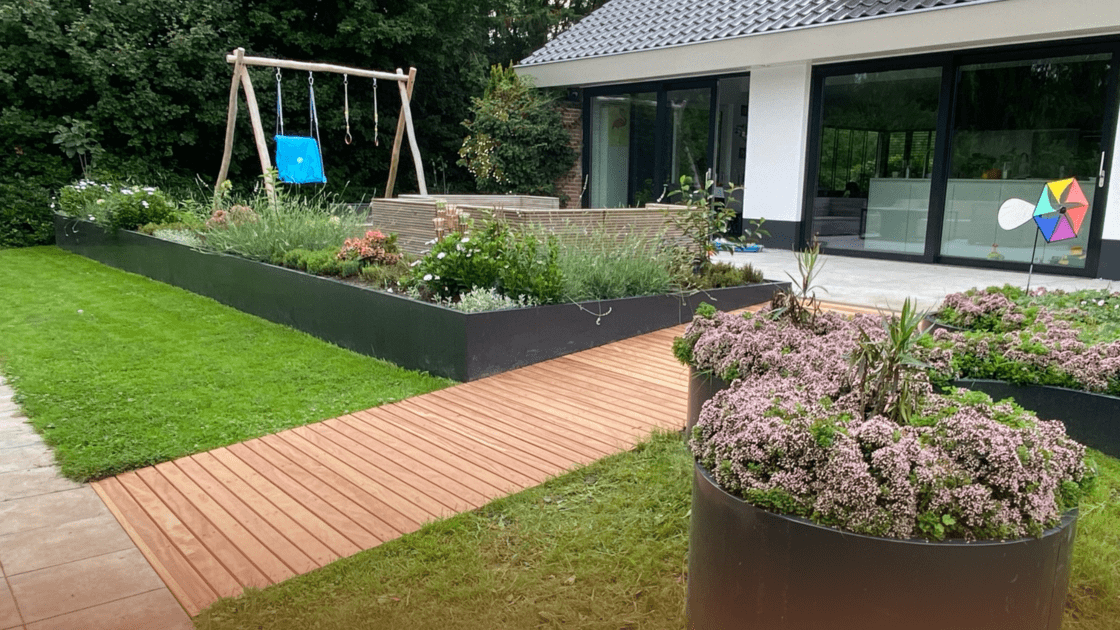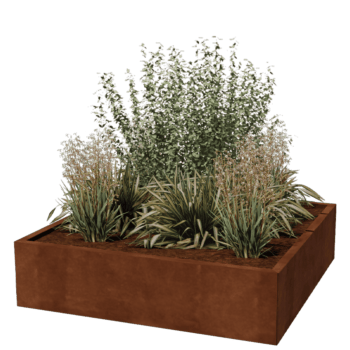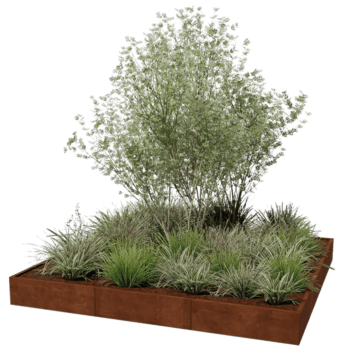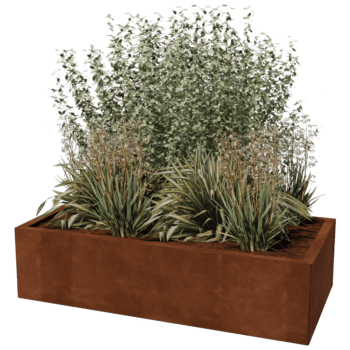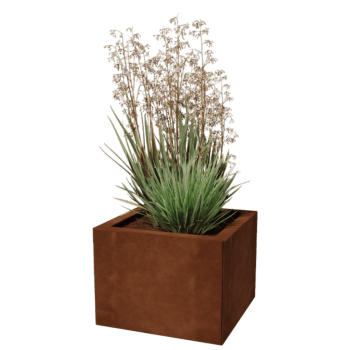Filling a Corten Steel Planter: Complete Step-by-Step Guide
A corten steel planter is a beautiful addition to any garden, but filling it requires some attention. It’s more than just adding soil and plants. You need a good plan and the right materials to help your plants grow well.
In this blog, we help you through this process. We explain step by step how to properly fill your corten steel planter and which materials are best to use. This way, you can enjoy a beautiful, blooming garden soon.
Summary
- It's important to fill a corten steel planter correctly and to use the right materials. This way, your plants will have the best environment to grow.
- You should avoid using hydro pellets. They remain constantly moist, causing the rusting process of corten steel to continue and scaling may occur.
- You can place ornamental grasses, perennials, and even shrubs or small trees in a planter.
Step-by-Step Plan to Fill a Corten Steel Planter
Do you want to fill your corten steel planter, but don’t know how to start? Follow these steps to create a perfect foundation for healthy planting. With the right preparation and materials, you will ensure your plants grow optimally, and your garden or terrace looks beautiful.
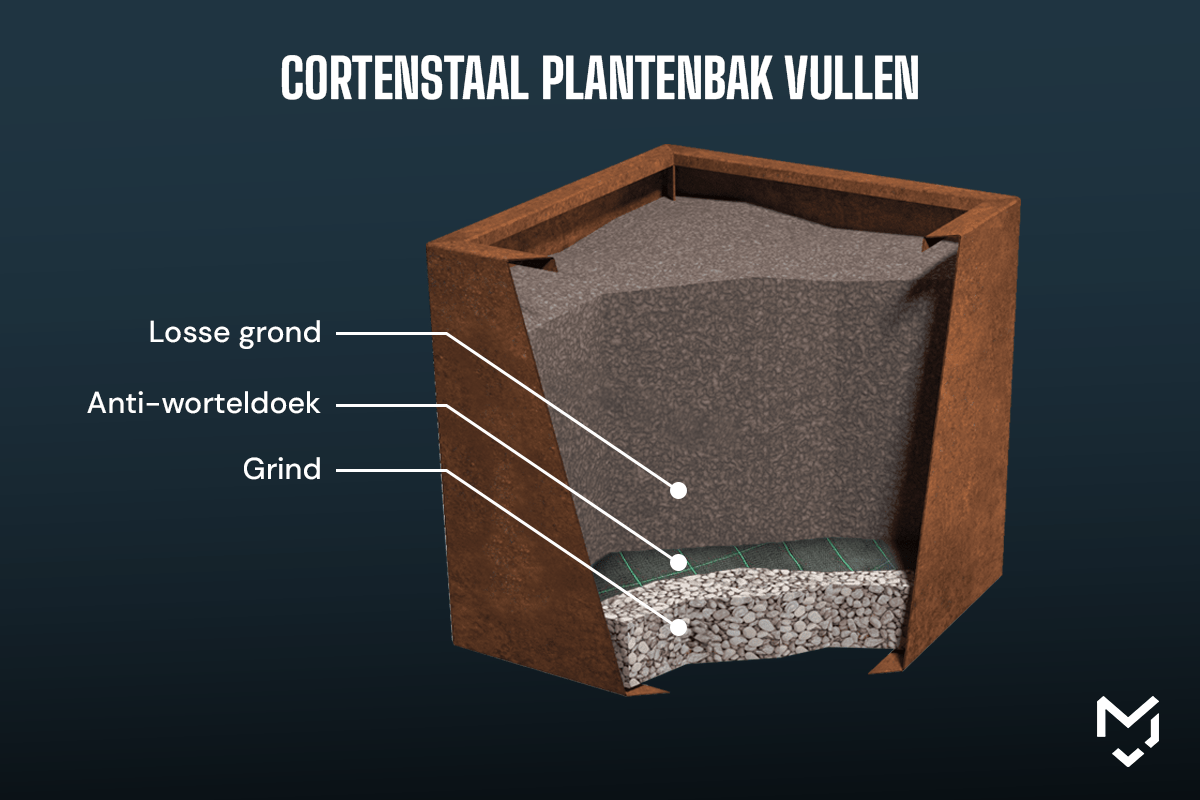

Step 1: Prepare the Base: Ensure a Solid Foundation
A good preparation of the base is important for the durability of your planter. Ensure that the base is flat and firm, so that the planter stands stable and no unwanted stresses occur. An even and firm foundation prevents the planter from sagging or becoming crooked. Your planter will look beautiful longer, and your plants can grow well.
Step 2: Install Drainage
After you’ve created a solid foundation, it’s time to ensure good drainage. How do you do that? Begin by placing a layer of pebbles about 10 cm high in the planter. This layer ensures that excess water can easily drain away.
Next, place a moisture-permeable weed cloth on top of the pebbles. Bring the cloth up the edges at least 10 cm. This prevents roots from reaching the bottom and causing the planter to clog. Also ensure that the bottom of your planter has holes, especially if you place it on a terrace.
Do not use hydro pellets
In regular planters, you can also use hydro pellets, but in a corten steel planter, hydro pellets are not suitable. Hydro pellets remain constantly moist, causing the rusting process to not stop, and scaling can occur.
Reading Tip
If the corten steel planter remains in contact with high water continuously, an additional layer of rust can form and the ‘original rust layer’ may start to shed. Read more about this in our blog "Can Corten Steel Handle Water?"
Step 3: Choose the Right Soil
Choosing the right soil is very important for your plants. Fill the planter with a light soil mixture that fits the needs of your plants. A good mix is potting soil mixed with coarse sand, as this allows excess water to drain away well. Do not compact the soil too hard, so that the roots of your plants can easily grow through the soil. This gives your plants the best chance to become healthy and strong.
Step 4: Give the Planter Breathing Space
Leave at least 1 cm of space around the planter. This breathing space prevents moisture from getting trapped, which can cause mold and root rot. Good air circulation helps prevent this and contributes to the well-being of your plants. This way, they stay healthy and can grow well.
“Do not use hydro pellets in a corten steel planter. They remain moist, causing the rusting process of corten steel to continue, which can lead to scaling.”
Step 5: Add Plants
Now that the foundation is laid, you can think about which plants you want to use. Consider the amount of sunlight, the height of the plants, and the colors you want in your garden design. Create height differences by placing taller plants in the center and shorter ones at the edges.
Experiment with different colors and textures to create a beautiful whole. A good way to think about distributing your plants is to consider thrillers, fillers, and spillers:
- Thrillers: tall, eye-catching plants that attract attention.
- Fillers: full plants that fill the space.
- Spillers: trailing plants that spill over the edge of the planter.
More information on suitable plants can be found in the section “Which Plants Can You Place in a Planter?”
Step 6: Maintain the Planter
A well-filled planter is important, but regular maintenance keeps your garden thriving. Regularly check the moisture of the soil and give your plants the right amount of water. Fertilize if necessary.
Corten steel develops a natural layer of rust that contributes to its appearance. To keep the planter looking good, clean it occasionally with water and a soft brush. This way, your plants stay healthy, and your planter always looks great.
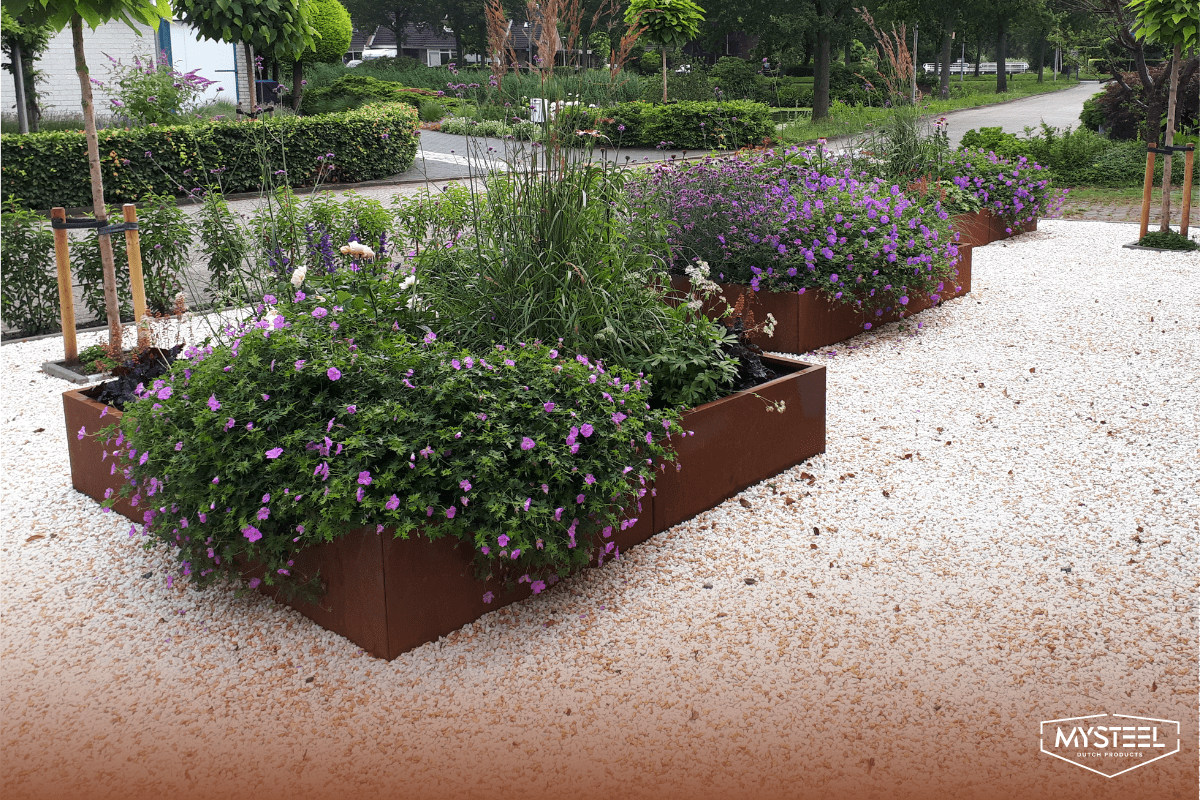

Which Plants Can You Place in a Planter?
The right plants can make a big difference in the appearance and ease of maintenance of your garden. Don't know which plants are suitable? Here are some suggestions that might help:
Ornamental Grasses
Ornamental grasses such as pampas grass, sand oats, Japanese blood grass, and lamp cleaner grass are real eye-catchers. They add texture and movement and are easy to care for.
Trees
Small trees like olive trees, dwarf apple trees, and Japanese maples can be impressive. Ensure they have enough space for their roots, and prune regularly.
Flowering Plants and Perennials
In addition to ornamental grasses and trees, flowering plants and perennials can also be a beautiful addition to a corten steel planter. Lavender, sage, geraniums, and hostas are lovely choices. They bring color to your garden and attract bees and butterflies, which is good for biodiversity.
Small Shrubs
Small shrubs like buxus, hebe, and lavatera provide structure and shape to your planter. They stay green and are easy to maintain. They also provide a beautiful background for shorter plants and flowers.
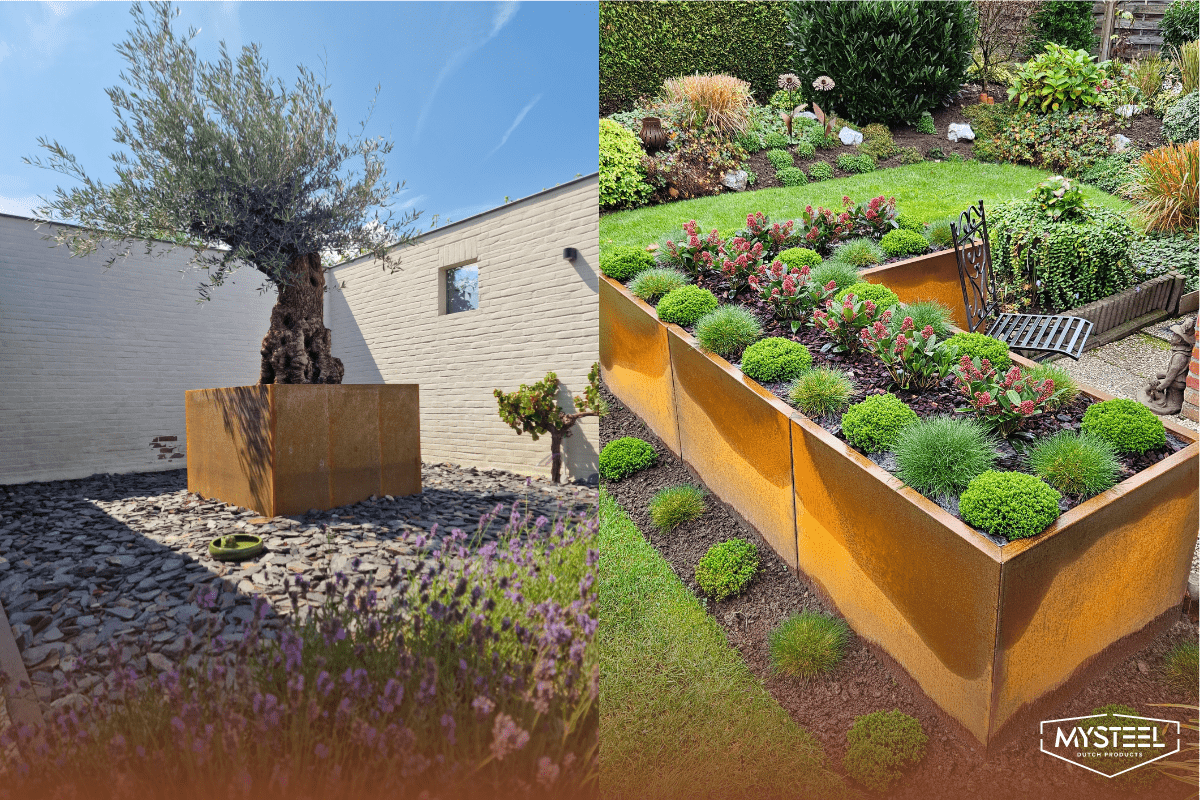

Conclusion
Filling a corten steel planter requires good planning and the right materials. Start with a solid base and ensure proper drainage with pebbles and weed cloth. It’s also important to use the right soil and give your planter enough breathing space.
With regular care and maintenance, you can enjoy your beautiful and functional corten steel planter to the fullest. By following these steps, you'll have a blooming and vibrant planter that is a beautiful addition to your outdoor space.

